Your Stories of Blissful Foods Made in Monasteries
Holy cheeses, wines, and cakes abound.
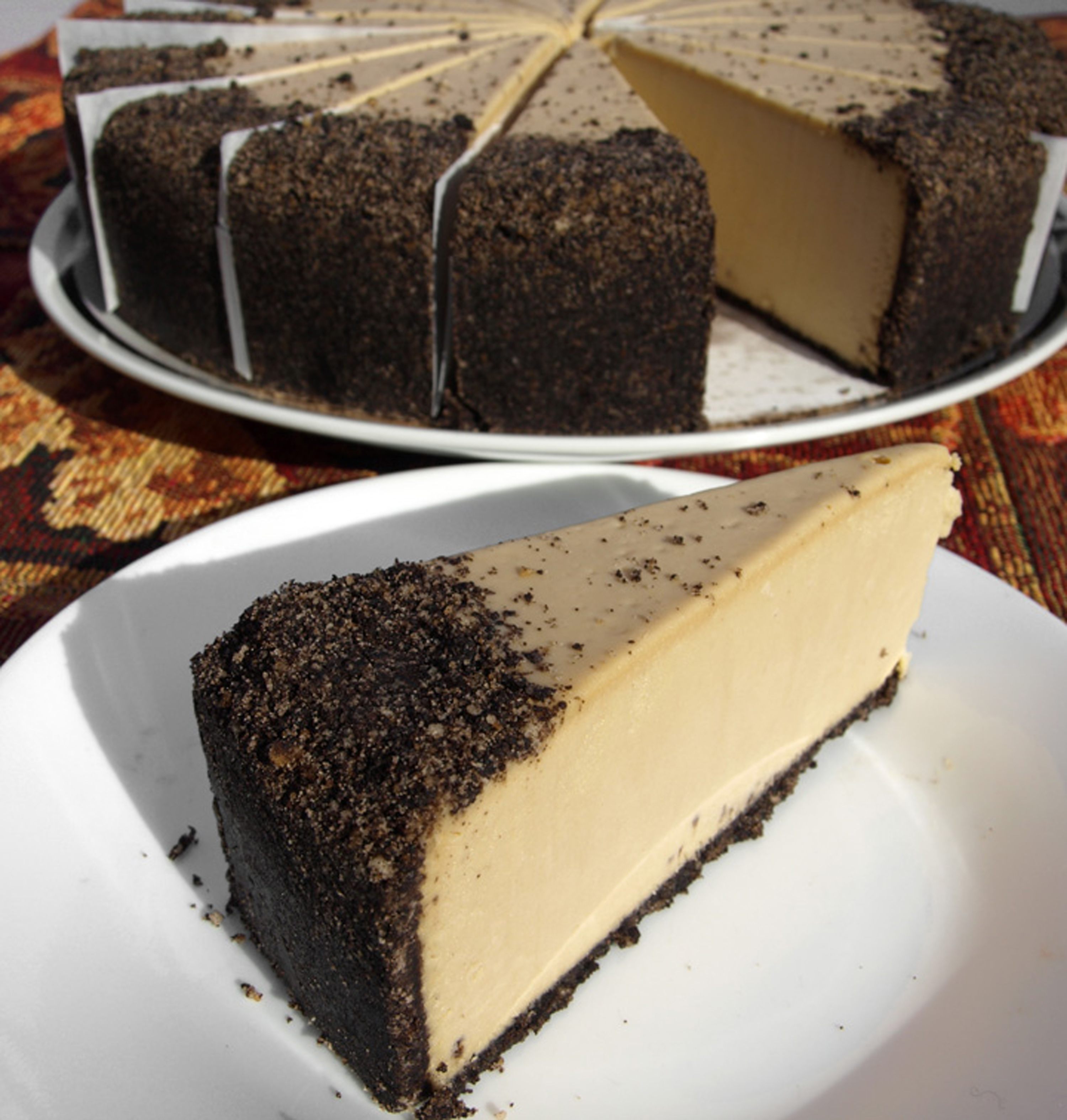
When it comes to making delicious treats, monks and nuns are no slouches. When we asked Atlas Obscura readers to tell us about their favorite foods made in religious institutions, more than 100 responses poured in. Our readers have feasted on sweets and beer with age-old histories during study-abroad adventures, honeymoons, and family trips. People also wrote in to endorse cherished monastery foods made in their own communities—many of which have shorter histories, but are no less beloved. Both old favorites and new made it into our global monastery foods map.
Throughout the dozens of responses, one common thread was an appreciation for the peaceful atmosphere at these convents and monasteries. At many institutions, the proceeds from sales of sweet or boozy treats funds monastery upkeep and community programs. So, without any guilt, enjoy this heavenly feast provided by the readers of Atlas Obscura.
Pumpkin Bread
The Monastery of the Angels, Los Angeles, California
“The Monastery of the Angels makes the most delicious pumpkin bread. Dense and moist, it’s ‘ta die for.’ They also sell peanut brittle and hand-dipped chocolates. The monastery is really located in Hollywood, just off of very busy Franklin Avenue. It’s a sweet place with a chapel for prayer and a gift shop. A lovely respite from the Hollywood craziness. — Leslee Harman, Burbank, California
“The pumpkin bread from the Monastery of the Angels here in Los Angeles is legendary. It’s not the pumpkin bread that your grandmother used to make. It’s way better.” — Joanne, Long Beach, California
Montserrat Monastery Liqueurs
Santa Maria de Montserrat Abbey, Catalonia, Spain
“The monks of Montserrat Monastery in Spain make a liqueur called Aromes de Montserrat liqueur and Licor Ratafia de Montserrat. This was so delicious and sweet, like an elixir, and apparently can’t be sent to the United States. It’s made with different herbs and spices, like lavender, cinnamon and cloves, etc. We discovered it in 1981 and carried a cask in our suitcase, but never were able to taste it again.” — Barbara Ezell, Chicago, Illinois
“One of my coworkers brought back ‘airplane bottles’ of Montserrat Monastery liqueur as souvenirs. I got the ‘herbal’ flavored one, and assumed it would taste medicinal. It actually tasted exactly like banana bread! I immediately hopped online to try to buy some more, but as it turns out, the monastery doesn’t ship to the United States. I was disappointed, but it seemed appropriate. I’m sure the monks would agree that the best things in life aren’t easy to attain!” — Erica S., Herndon, Virginia
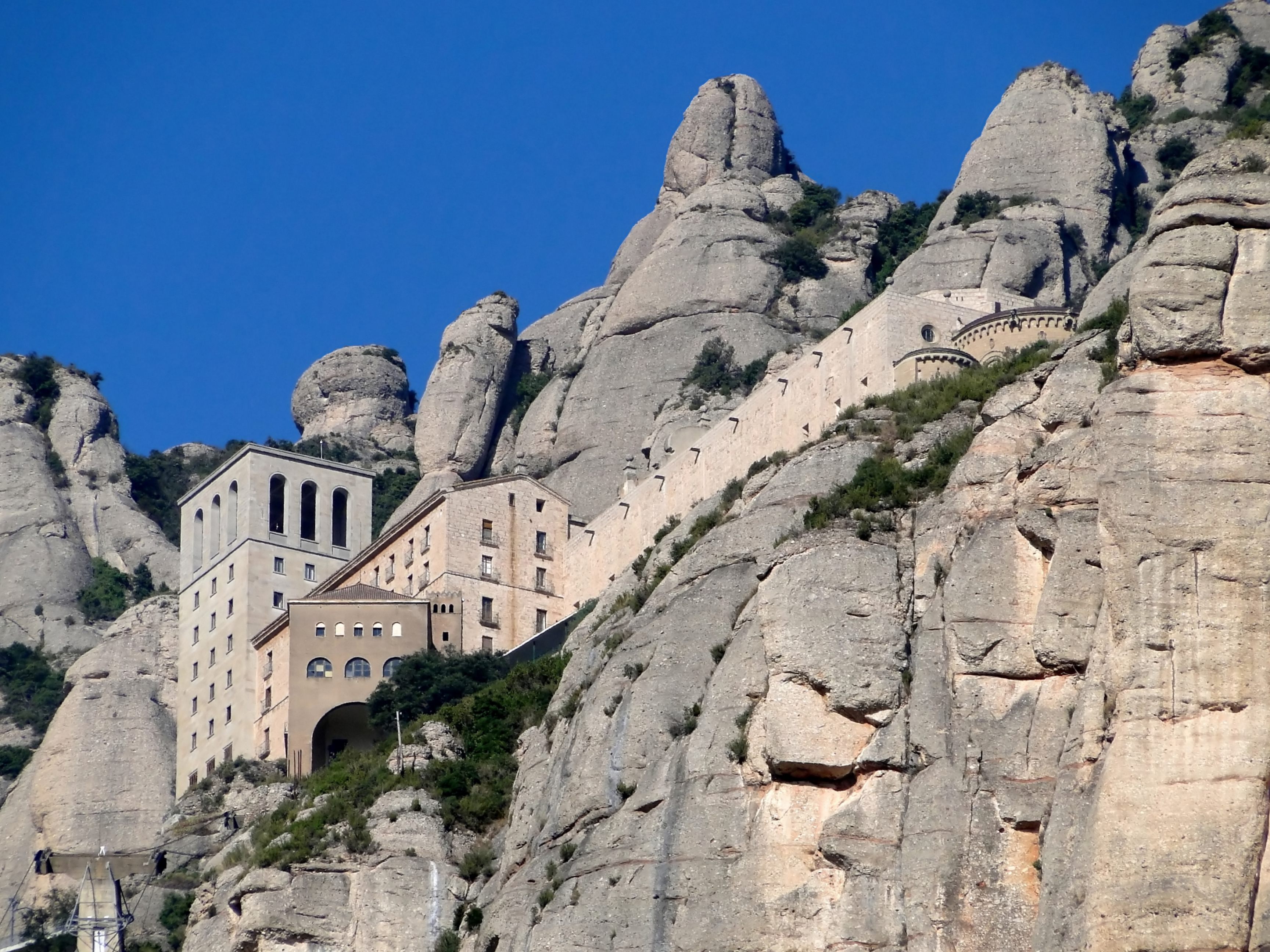
Licor Valvanera
Monastery of Our Lady of Valvanera, Anguiano, Spain
“Licor Valvanera is made by Benedictine monks and is very good. I had the pleasure of trying it for the first time in the early 1980s at the monastery, in the company of one of the monks responsible for making it. He refused to divulge anything about the recipe, except to admit it included ‘grasses.’” — Jorge Fors, Coral Gables, Florida
Zinnaer Klosterbruder Kräuterlikör
Zinna Abbey, Jüterbog, Germany
“I tried Zinnaer Klosterbruder Kräuterlikör, a bittersweet herbal liqueur at 35 percent alcohol. Zinnaer Klosterbruder originated from the Zinna Abbey, a former Cistercian monastery founded in 1170. The distillate dates back to 1759, when it was produced by innkeeper Johann Christian Falckenthal in nearby Luckenwalde from the recipe of a monk of the Zinna Abbey. As a purveyor of schnapps, and perhaps a bit heartbroken at the time, I was compelled to try the Zinnaer Klosterbruder Kräuterlikör. It has a complex taste, about as distant to a traditional German fruit schnapps as one can get. The recipe includes a number of unspecified herbs, and the story of its origin tells of a man who created the elixir in an act of desperation to sever his broken heart.” — Mike Taylor
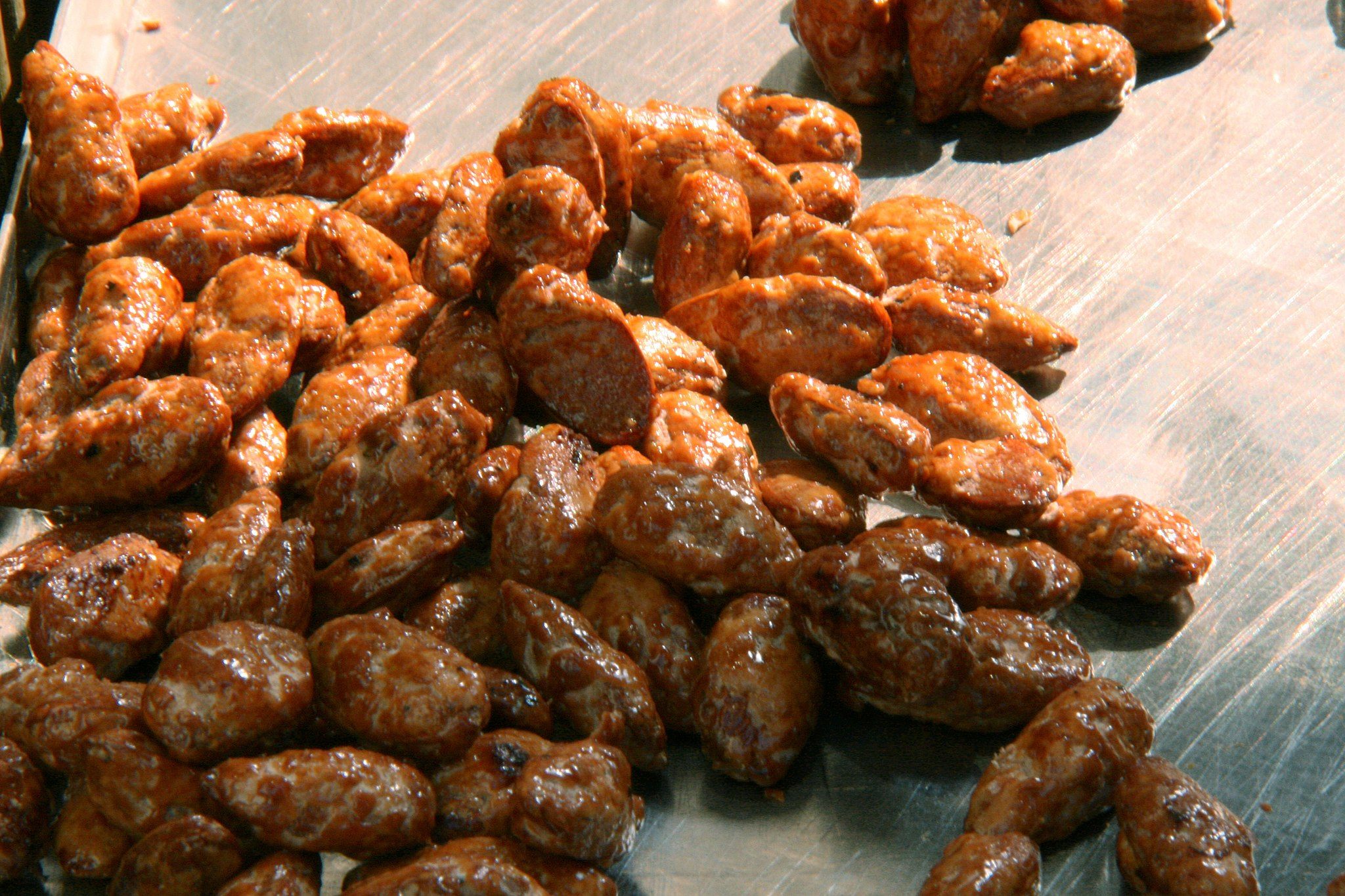
Candied Almonds
Convento de las Clarisas de San Diego, Alcalá de Henares, Spain
“Almendras garrapiñadas made in Alcalá de Henares, Madrid, Spain at the Convento de las Clarisas. The sweet candy almonds from the convent were one of the best parts of studying abroad in Madrid. My classmates and I would buy some on our way to the university and snack on them in class. You could never buy a box and save it for later; we always ate the whole box in one go.” — Megan, St. Cloud, Minnesota
Our Lady of Lourdes French Meat Pies
Our Lady of Lourdes, Minneapolis, Minnesota
“Our Lady of Lourdes Catholic church in Minneapolis, Minnesota, has been making French meat pies since the late 1800s. Made with pork tenderloin, they are sold as well as served to the less fortunate at church dinners. An old, yummy, French-Minnesota tradition.” — Amy, Arizona
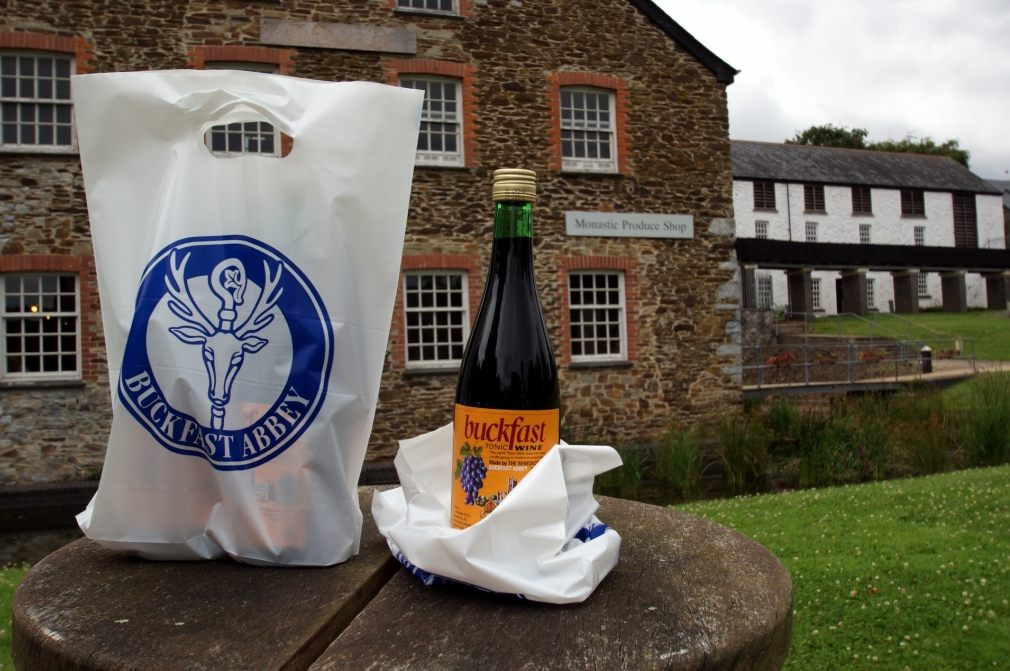
Buckfast Tonic Wine
Buckfast Abbey, Devon, England
“Buckfast is a drink high in alcohol and caffeine that was originally made by English monks. But, (per Wikipedia), it’s ‘now made under a license granted by the monastery.’ It’s strongly associated with loutish, drunken behavior in Scotland, which makes it simultaneously controversial and somewhat ridiculous. Both of these things make Buckfast interesting, given its historical association with some presumably polite and well-meaning monks down in Devon. I loved it when I tried it, more for its effects than its flavor.” — Len Epp, Victoria, British Columbia
Trappist Mango Products
Our Lady of the Philippines Trappist Abbey, Guimaras, Philippines
“Dried mangoes, mango biscocho, mango preserves, mango bars. All made from mangoes harvested from the monastery lands and those grown only in the island of Guimaras. Importation of any mango product outside the island is strictly prohibited. This is to protect the island’s mangoes from genetic degradation and disease.” — Nina Candelario, Visayas, Philippines
Earth-Aged Cheese
Santuario della Madonna del Sangue, Re, Italy
“We were touring the northern Italian countryside by convertible, traversing the switch-back roads up the forested hill when we came upon a small, medieval town at the top of the mountain, high above the clouds. As we entered the town proper, we noticed monks in their habits pulling large wheels (three to four feet in diameter) from the earth in an almost rhythmic toil. We parked at the cloister, wandering about until we found a small storefront with local folks working alongside the monks lifting and cutting the large wheels of cheese on thick, worn cutting tables. The cheese, as we were told, was made from cow’s milk, and the taste was akin to a hard-rind gruyere. It was rich, nutty, with deep earthen notes, and delicious. We purchased a small piece of the wedge⏤a whole wedge being two-feet long, and heavy⏤and then walked through to the basilica.” — Michael J.D. Gerrior, Washington D.C.

Red Walnut Buns
City of 10,000 Buddhas, Ukiah, California
“Red walnut buns at the City of 10,000 Buddhas in Ukiah, California. It was the most delicious walnut bun ever. The walnuts came from the trees on the grounds of the temple. The temple was a former insane asylum. Now it’s a peaceful place.” — Eveline, Alameda, California
Whoopie Pie Stout
Friars’ Brewhouse Tap Room, Bucksport, Maine
“This is a tiny brotherhood of three Franciscan friars, who began as bakers, but added brewing to their production. With a small (two- or three-barrel) system, they don’t produce 1/1000th of the beer that big Trappist monasteries in Belgium brew, but each small batch is measured and milled, mashed and sparged, bottled and labeled by Friar Donald Paul and his two brothers. Brother Donald, who is a descendant of St. Arnold of Metz, the patron saint of beer, makes an especially popular and delicious Whoopie Pie Stout.” — Anonymous, Portland, Maine
Cheesecake
Nuns of New Skete, Cambridge, New York
“The cheesecake is so rich and creamy! They ship the cheesecakes all over. Delicious! The property is gorgeous, and retreats are held there year round. There are also monks at the monastery that raise world-renowned German shepherd dogs.” — Debra Komar, Verona, New Jersey
“The cheesecakes just melt in your mouth. So rich, so creamy. They also come in a variety of flavors, including alcoholic ones.” — Allen Nakagawa, San Francisco, California
“A bite of their cheesecakes (which come in a variety of flavors) will make your eyes roll back into your head!” — Brendan Gerrity, Costa Mesa, California
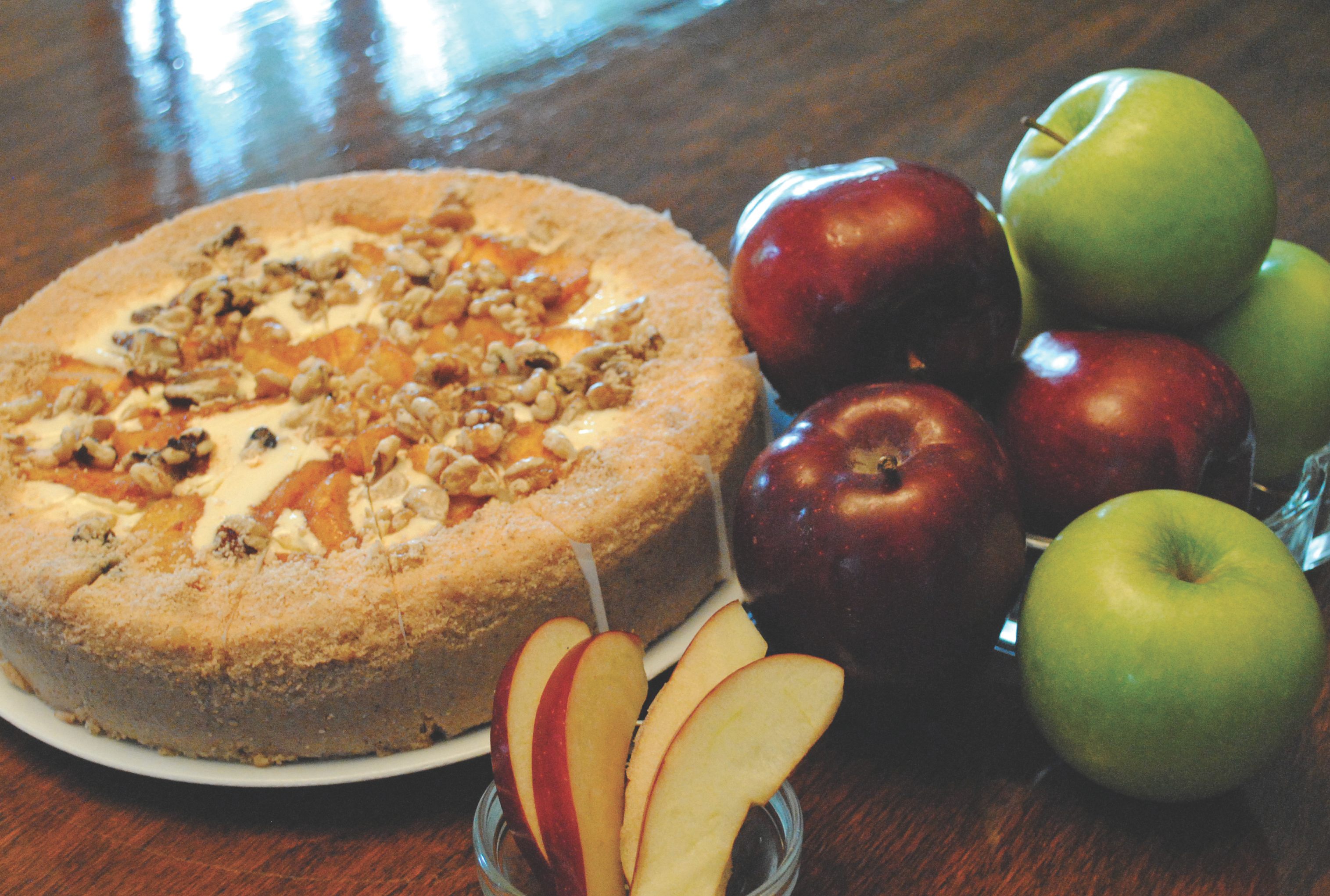
Kentucky Bourbon Fruitcake
The Abbey of Gethsemani, Kentucky
“My father-in-law gives one of these fruitcakes to each of his children at Christmas. Nobody in my family, except me, would eat it. Until I got my boys to try some. Now we fight over it. My father-in-law started send fudge for my wife. She and the boys fight over that. This is really, really good stuff.” — Gregory Leiby, Greer, South Carolina
“The Abbey of Gethsemani is in rural Kentucky, not too far from Louisville or Lexington. I have never been a fruitcake person, but the Kentucky Bourbon Fruitcake is the only kind that I have truly enjoyed. The community was established in 1848, and I often think how peaceful their lives must be. You can visit and stay if you want some solace.” — Scott Toncray, Franklin, Tennessee
“I’d never eaten fruitcake before, possibly due to the its bad reputation. So I was a little leery when it was served. It turned out to be sweet, but not overly, and firm-textured, but not hard-as-a-rock and unctuous, as I had feared. That said, a little goes a long way, so I ate just a few small pieces—and have lived to tell the tale.” — David Korn, Columbus, Ohio
Cookies
Convent of St. Isabel la Real, Granada, Spain
“The cookies at the Convent of St. Isabel la Real in Granada, Spain, are incredible, specifically the ones with chocolate in the middle. Granada was beautiful, but seriously, who knew convents have cookies! They were fantastic and had such an interesting process for getting them. [Note: Since the nuns are cloistered, cookies are purchased via a turntable.] So secretive, yet out in the open.” — Louise Rose Rothschild, Washington D.C.
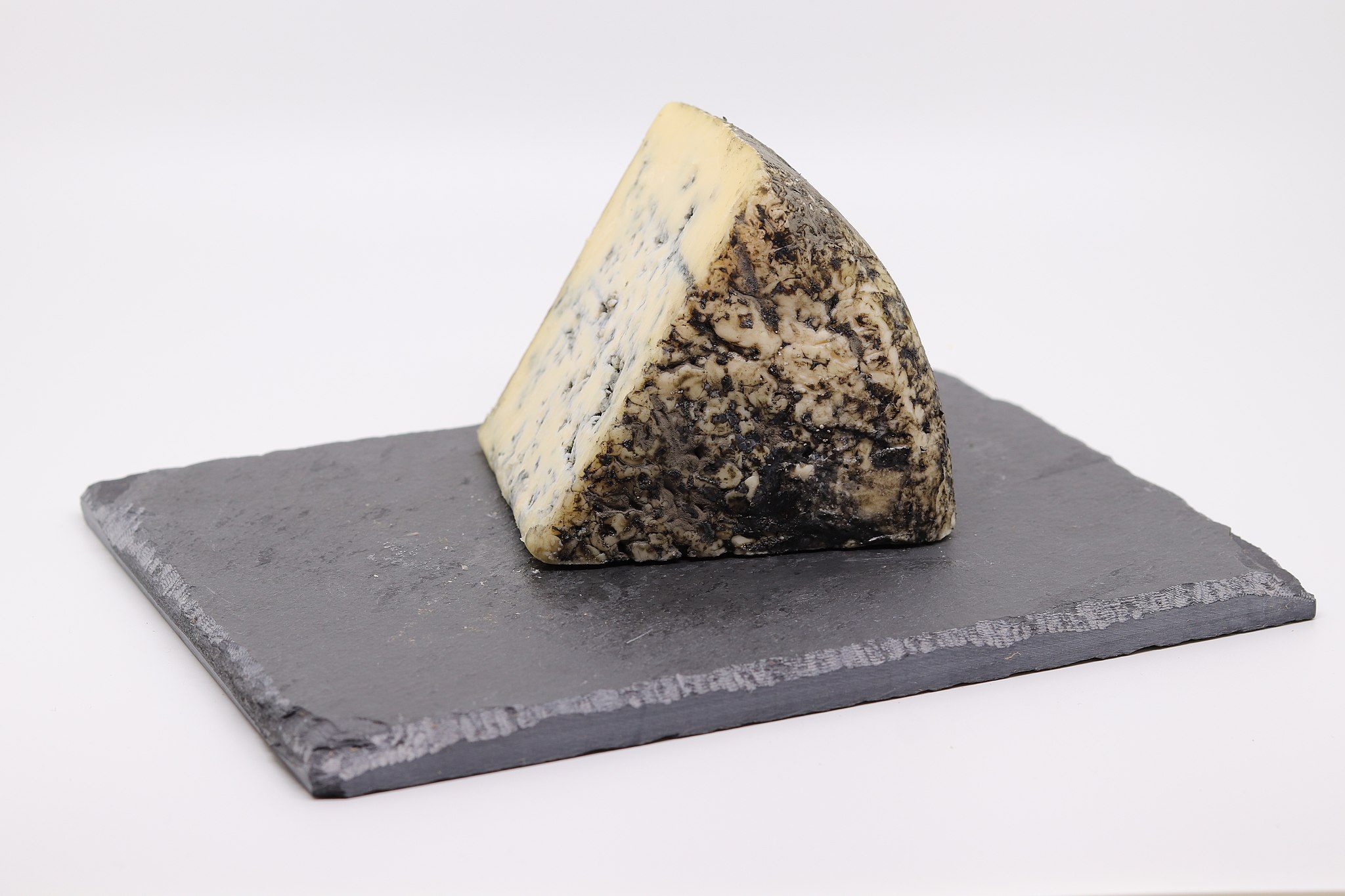
Cheese
Abbey of St-Benoit-du-Lac, Eastern Townships, Quebec
“St. Augustine Cheese from Abbey of Saint-Benoît-du-Lac! This is a beautiful abbey in the Eastern Townships of Québec. It is well known for its variety of scrumptious cheeses, wine, and preserves, and the beautiful architecture of the building itself. It is a wonderful experience to walk the grounds, especially with the fall foliage in full flame. It is the perfect mental vacation with a bonus of delicious foods to take home.” — Lynda Bathory, Montreal, Quebec
“Nestled in the idyllic Eastern Township of Québec, the Fromagerie de L’Abbaye Saint-Benoît is the only cheese dairy in North America that is run by Benedictine monks. The first cheese created at the Abbey in 1943 was the famed blue Ermite cheese, which is still a celebrated cheese. Aged longer than Ermite, Bleu Bénédictin has a melt-in-the-mouth center and pleasant aftertaste. It retains its natural rind, giving it a wild mushroom aroma and woody flavors. It is absolutely yummy! As a certified sommelier, I love this with a light fruity wine (Gamay grape) like Beaujolais, or a fruity, light lager beer like a Belgian wheat beer.” — Brian Preston, Portland, Ontario, Canada
Andechs Monastery Beer and German Cuisine
Andechs Monastery, Bavaria, Germany
“My Dad and I rode bicycles from Lake Starnberg in Bavaria to the Andechs Monastery to try the beer, which the monks have been brewing for hundreds of years. We were amazed when we finally got to the hilltop where the brewery-monastery is found: crowds of locals in lederhosen downing beer by the liter. My Dad drank two liters himself. The beer was wonderful, especially the light summer style weissbier. And the views of the mountains was spectacular. However, besides learning the wonderful history of Andechs, we learned another important lesson that day. If you ride bikes up a Bavarian mountainside to enjoy some beer, it’s especially important to wear a bike helmet. Especially on the way back down!” — Richard Loftus, M.D., Rancho Mirage, California
“The hilltop Andechs Monastery above the Ammersee in Bavaria brews the most wonderful beer, from deliciously malty Hell, a classic Bavarian lager, to richer Bock beers. The beautiful Benedictine monastery also serves typical German cuisine, including a memorable pork knuckle, served rather gruffly. ‘Take!’ says the barman, as he plonks the food and frothing beer down.” — Andrew MacDowall, Paris, France

Pepper Jelly
Holy Wisdom Monastery, Middleton, Wisconsin
“Pepper jelly, made from a variety of peppers from their garden. A unique mix of sweet and hot. I helped grow and pick the peppers on a six-month internship there!” — Diane Ray, Madison, Wisconsin
Mountain Maid Ube Jam
Good Shepherd Convent, Baguio, the Philippines
“It is delicious. The demand is so great that purchases are limited to one bottle per customer.” — Juan Luis Faustmann, the Philippines

Sénanque Liqueur
Abbaye de Sénanque, Vaucluse, France
“After visiting the Abbey about 30 years ago, a small shop at the entrance was selling monk-produced items, amongst them a deep green liqueur in liter bottles: Macération de sauge. Meant as a health-reinforcing digestif, it turned out later at my campsite to be a thick, pungent, grassy sage potion that was difficult to get down. Thinking Chartreuse, I had innocently expected something … well, heavenly. But I think I ended up pouring out the last half of the bottle. My digestive tract would no doubt get along fine without it. The taste of it is nevertheless ingrained in my memories of that spiritual and beautiful Cistercian place.” — Bill, Geneva, Switzerland
Kloster Ettal Liqueur
Ettal Abbey, Ettal, Germany
“The green variety is especially appealing: herbal and aromatic. My current wife and I began our relationship after drinking it together on our first date. We call it the ‘love elixir.’” —Thomas Hay, Hartsdale, New York
Lérins Abbey Wine
Lérins Abbey, Île Saint-Honorat, France
“Wine cultivated by the monks of Île Saint-Honorat, part of the Lérins islands off the coast of Cannes, France. The monks are from the Lérins Abbey, and they actually own the island. The abbey is where St. Patrick studied to be a monk. Its sister island, Île Sainte-Marguerite, is where the infamous Man in the Iron Mask was imprisoned.” — Halley Rose, California
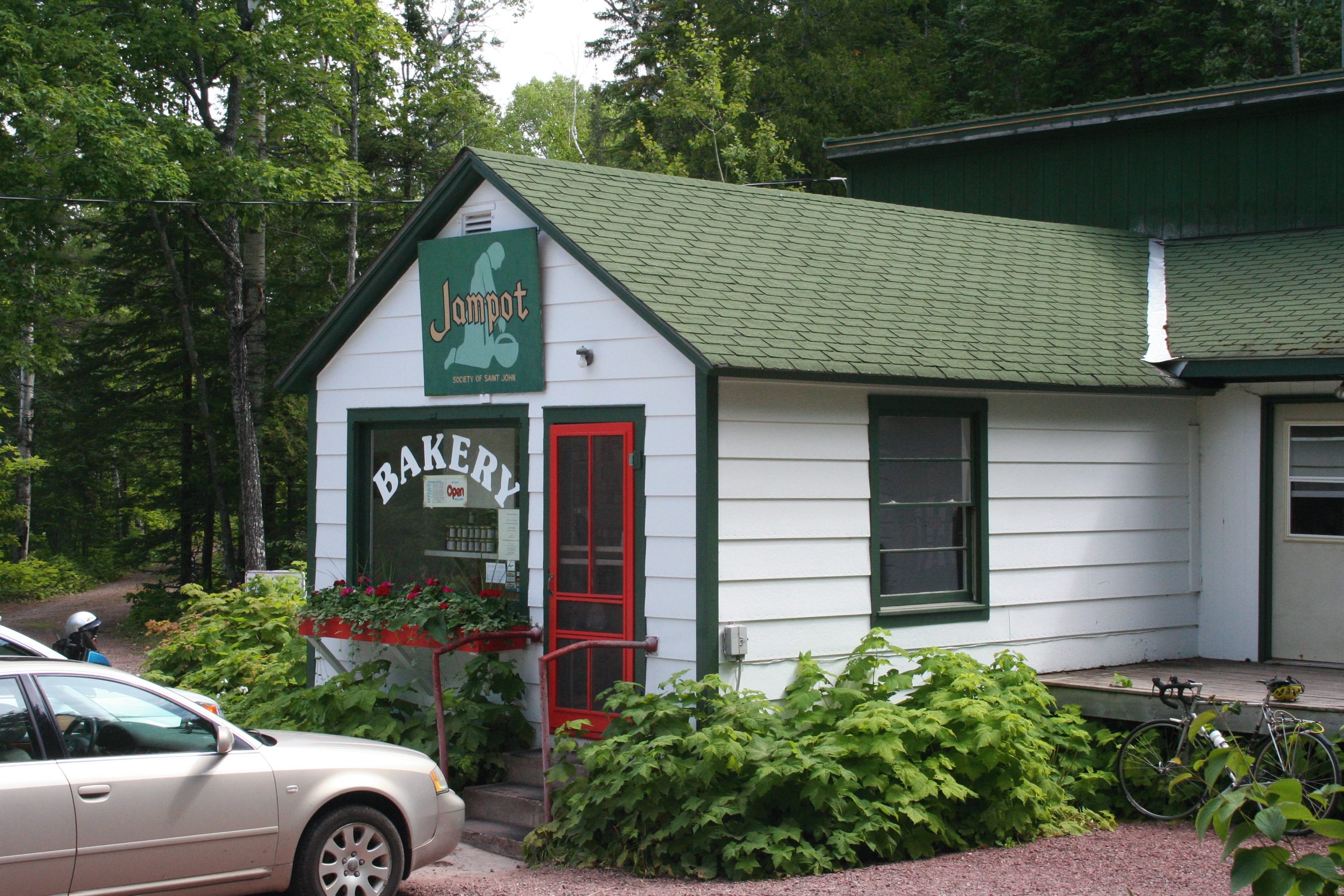
Jam and Abbey Cake
Holy Transfiguration Skete, Keweenaw County
“Abbey cake. It is an amazing fruitcake with a bourbon punch in the face. The quality of ingredients, the skill with which it was made, the peace of the place, the kindness and generosity, and humor and humility of the monks all come through in that cake. Truly wonderful.” — Anthony Greenburg, Lansing, Michigan
“Abbey cake made by the monks at the Society of St. John in the Keweenaw Peninsula of Michigan’s Upper Peninsula. It was a cheesecloth-wrapped, bourbon-soaked reward at the end of a long mountain bike ride. I still think about this cake 20 years later and 10 years into my gluten-free purgatory.” — Kristen Lehner, Chicago, Illinois
“Wild berry jam made by the monks of Poorrock Abbey, near Jacob’s Falls in Michigan’s Upper Peninsula. The monks operate a small shop called the Jampot. Everyone refers to them as the Jampot monks. They collect berries and fruit for the jam, and sell homemade breads and pastries. To get to the Jampot, follow M26 north along the Keweenaw Peninsula and the shore of Lake Superior. The domes and spires of the Byzantine Catholic monastery are just visible through the trees, and the monks greet everyone with a smile.” — Elizabeth, Drammen, Norway
Cookies and Liqueur
Monastery of Santa Escolástica and the Monastery of Singeverga, Porto, Portugal
“Portugal is a haven for convent pastry. Most of our heritage pastry and desserts came from old convent recipes. Dozens could be named, but the most well-known example is the Portuguese custard pastry, pastel de nata. Presently, most of the convents and monasteries that produced sweets are no longer active, making room for commercial parties. But that isn’t the case of two convents in the north of Portugal. They are both located in the city of Santo Tirso, Porto, and are in fact very close to each other. The first, the Monastery of Santa Escolástica, is inhabited by around 20 enclosed nuns who dedicate their time to producing and selling the best homemade cookies (sablé, coconut, almond) I’ve ever tried. A few miles away is the Monastery of Singeverga, where monks produce and age a spice-laden, aromatic liqueur named Licor de Singeverga.” — Bruno Carvalho, Porto, Portugal
Olive Oil
Dominican Sisters of Mission San Jose, Fremont, California
“The nuns make and sell olive oil from the old stand of olive trees on the grounds of Mission San Jose in Fremont, California. It is a very flavorful olive oil that has been made for many decades.” — Ernie, Fremont, California
Responses have been edited and condensed for clarity and length.
Gastro Obscura covers the world’s most wondrous food and drink.
Sign up for our regular newsletter.




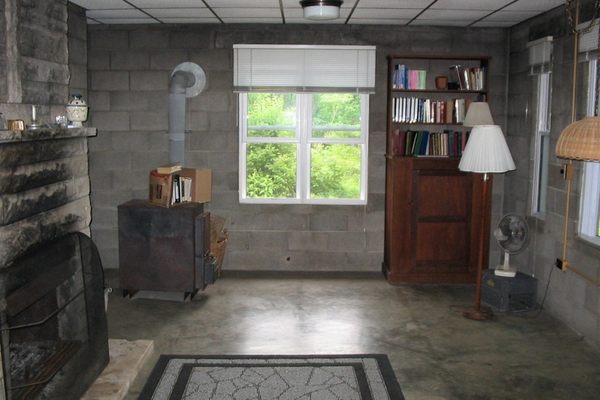

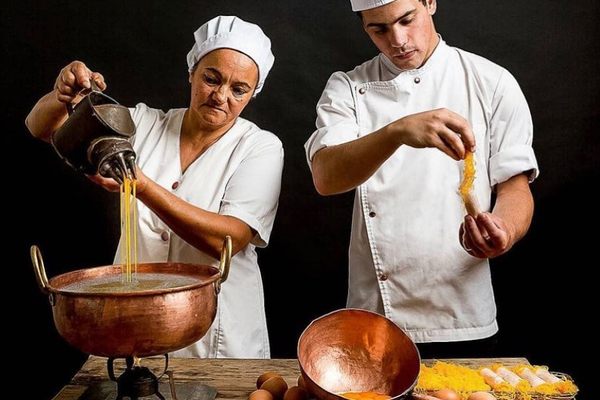
























Follow us on Twitter to get the latest on the world's hidden wonders.
Like us on Facebook to get the latest on the world's hidden wonders.
Follow us on Twitter Like us on Facebook